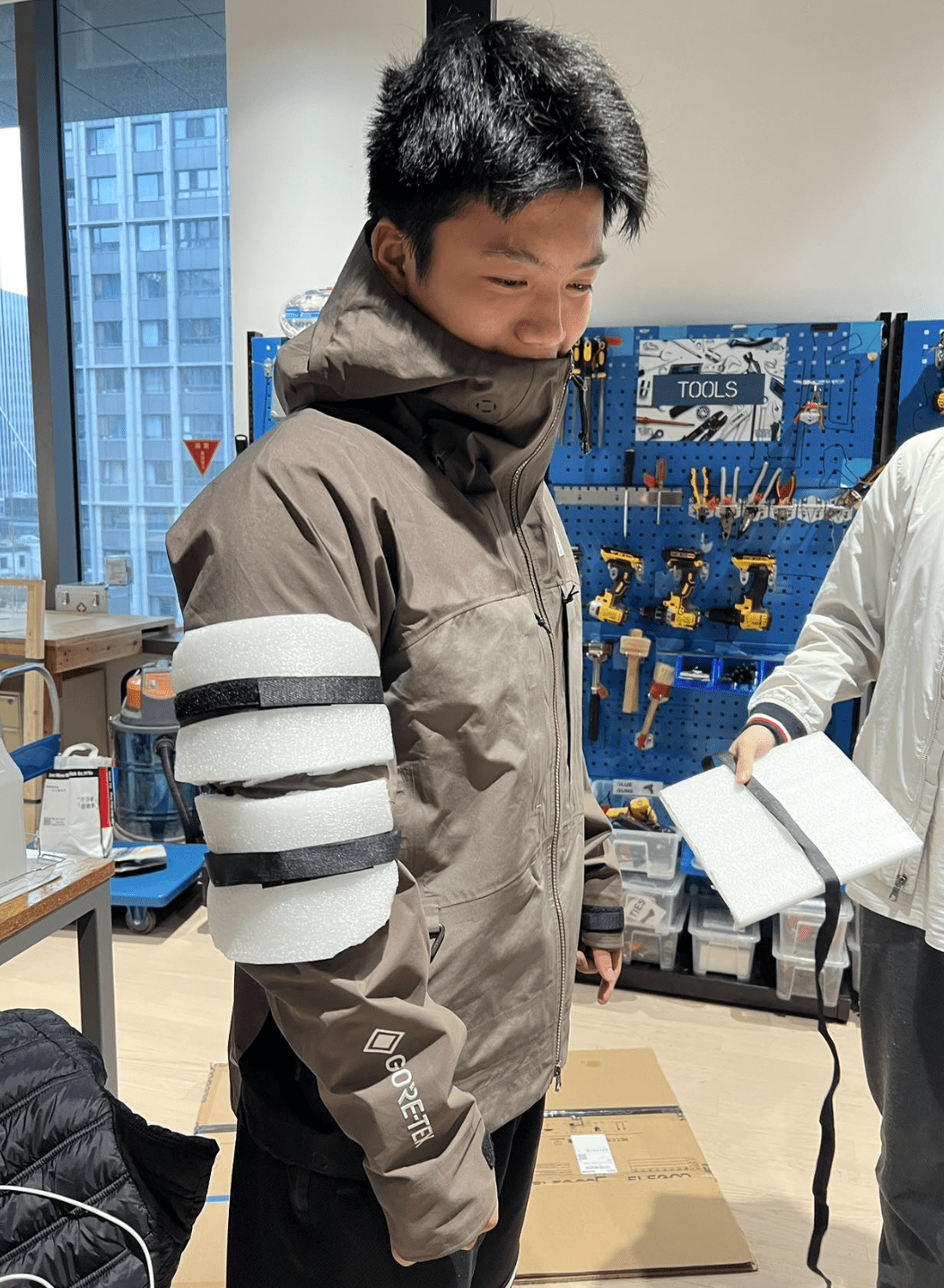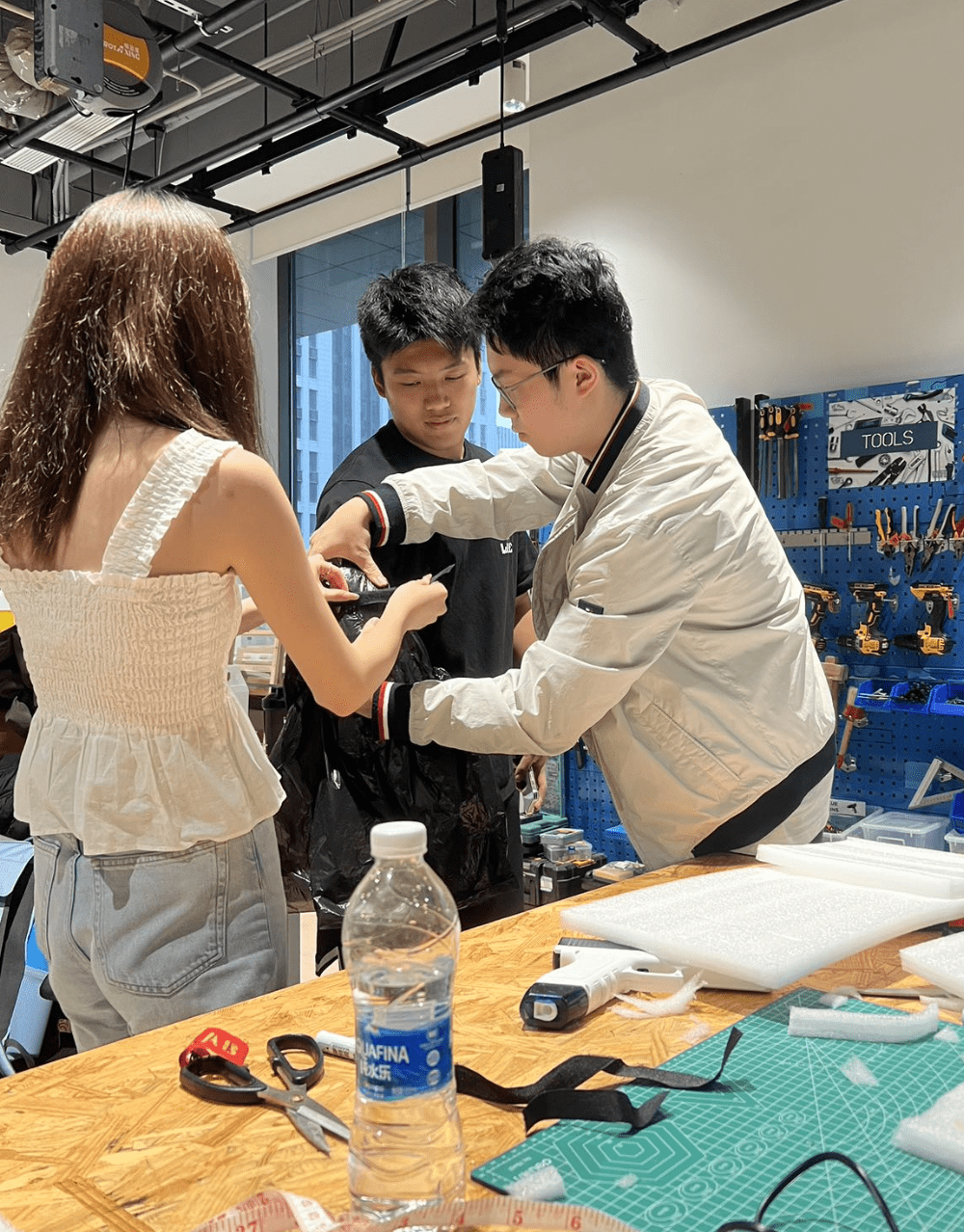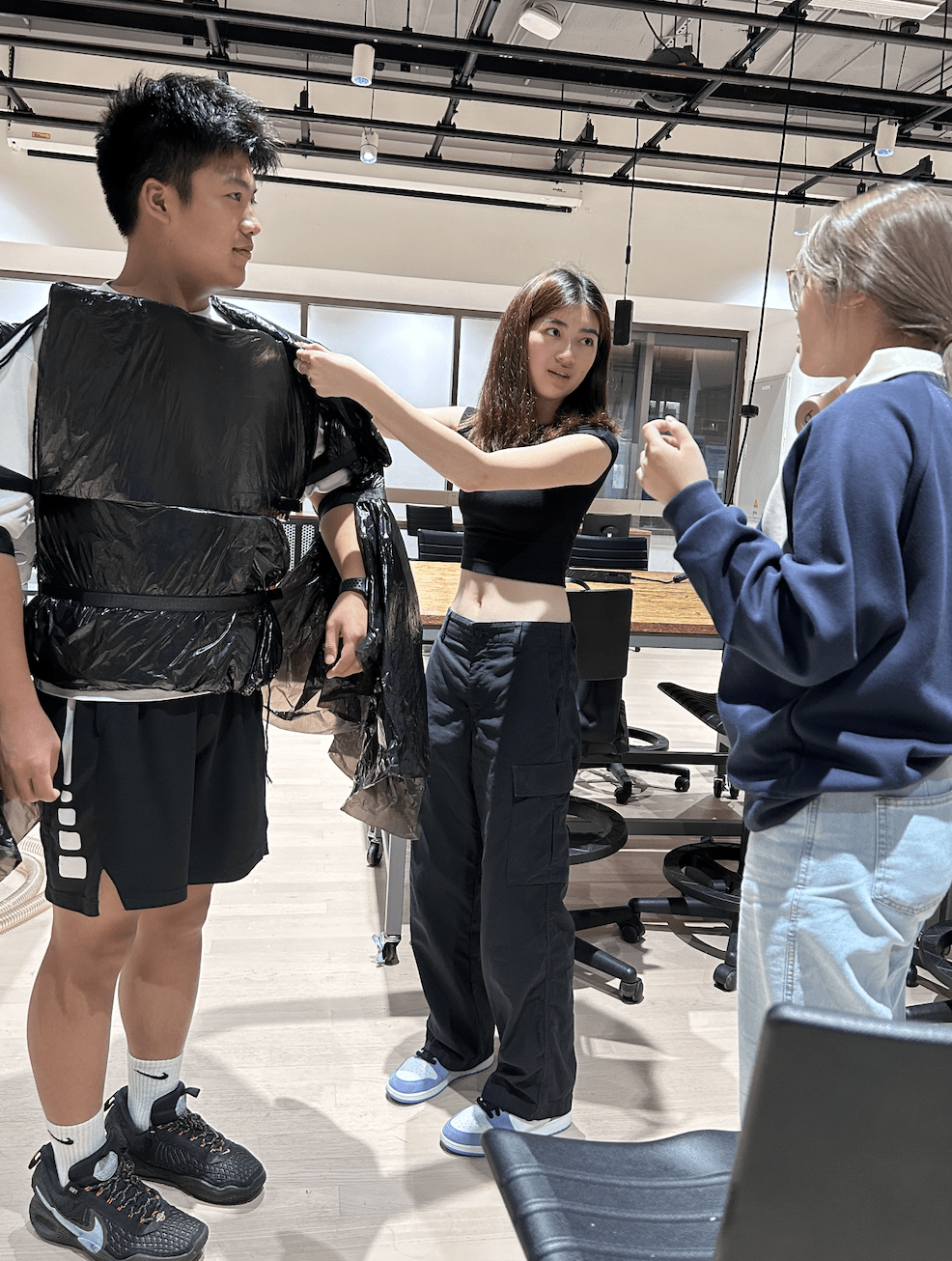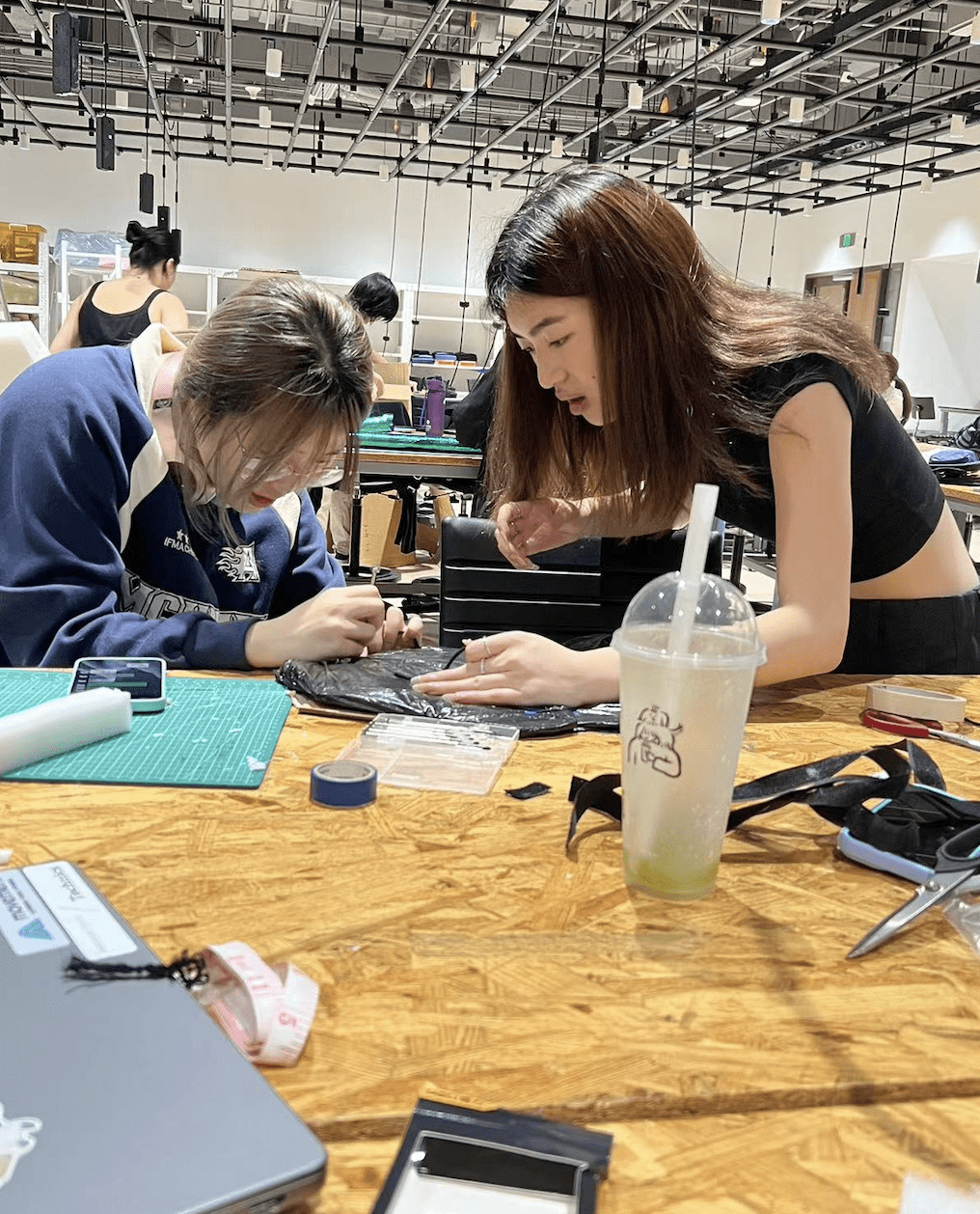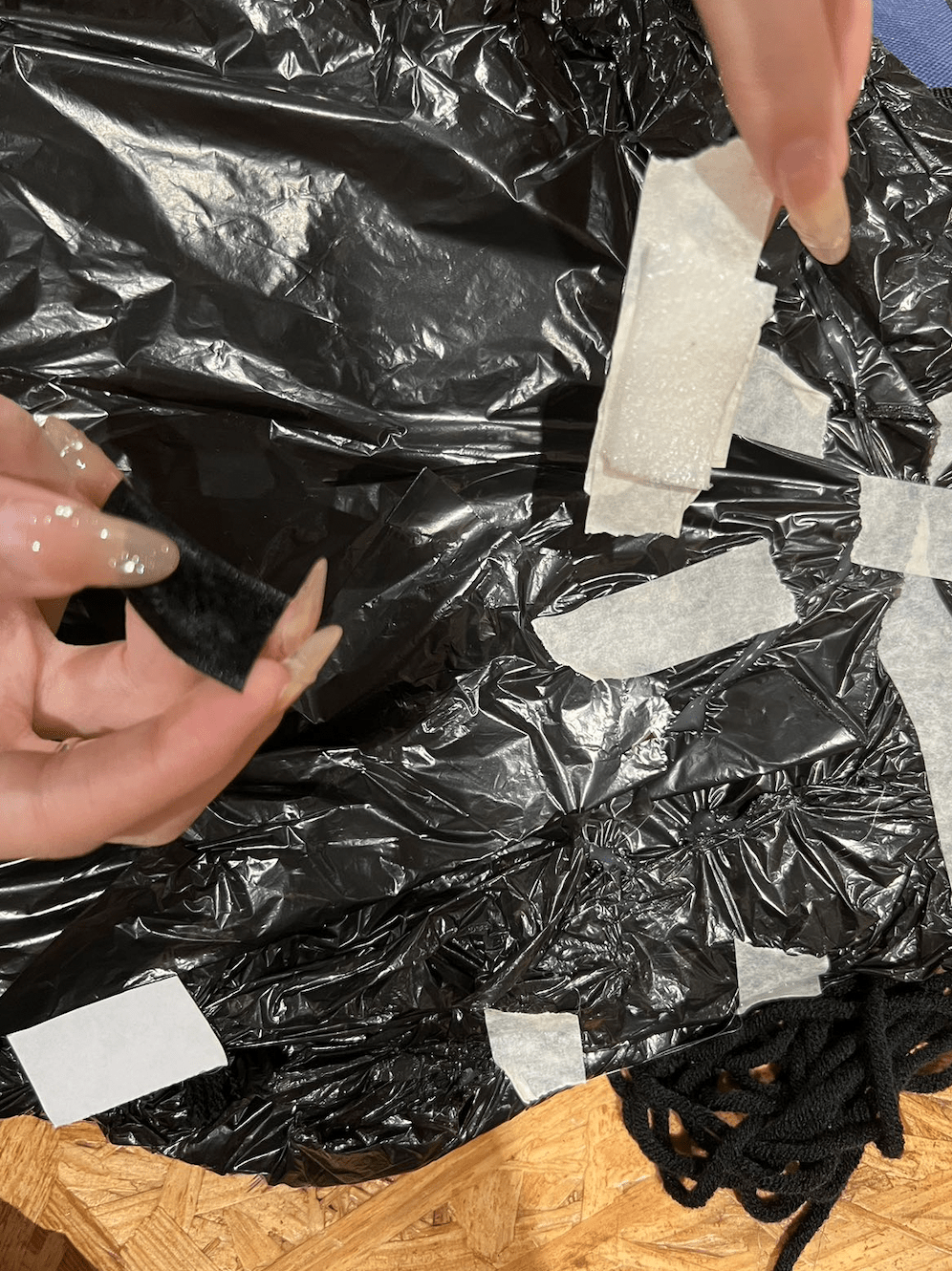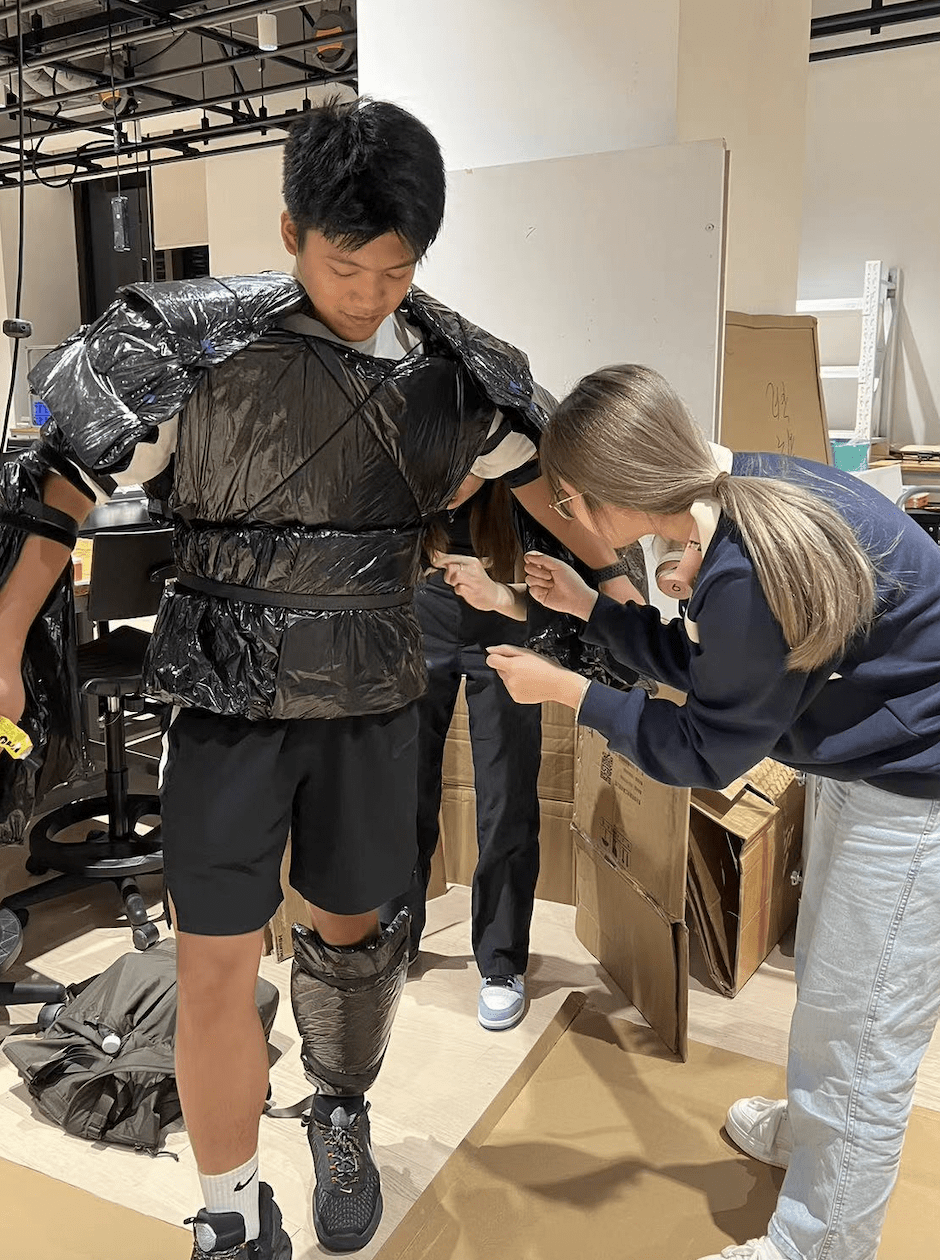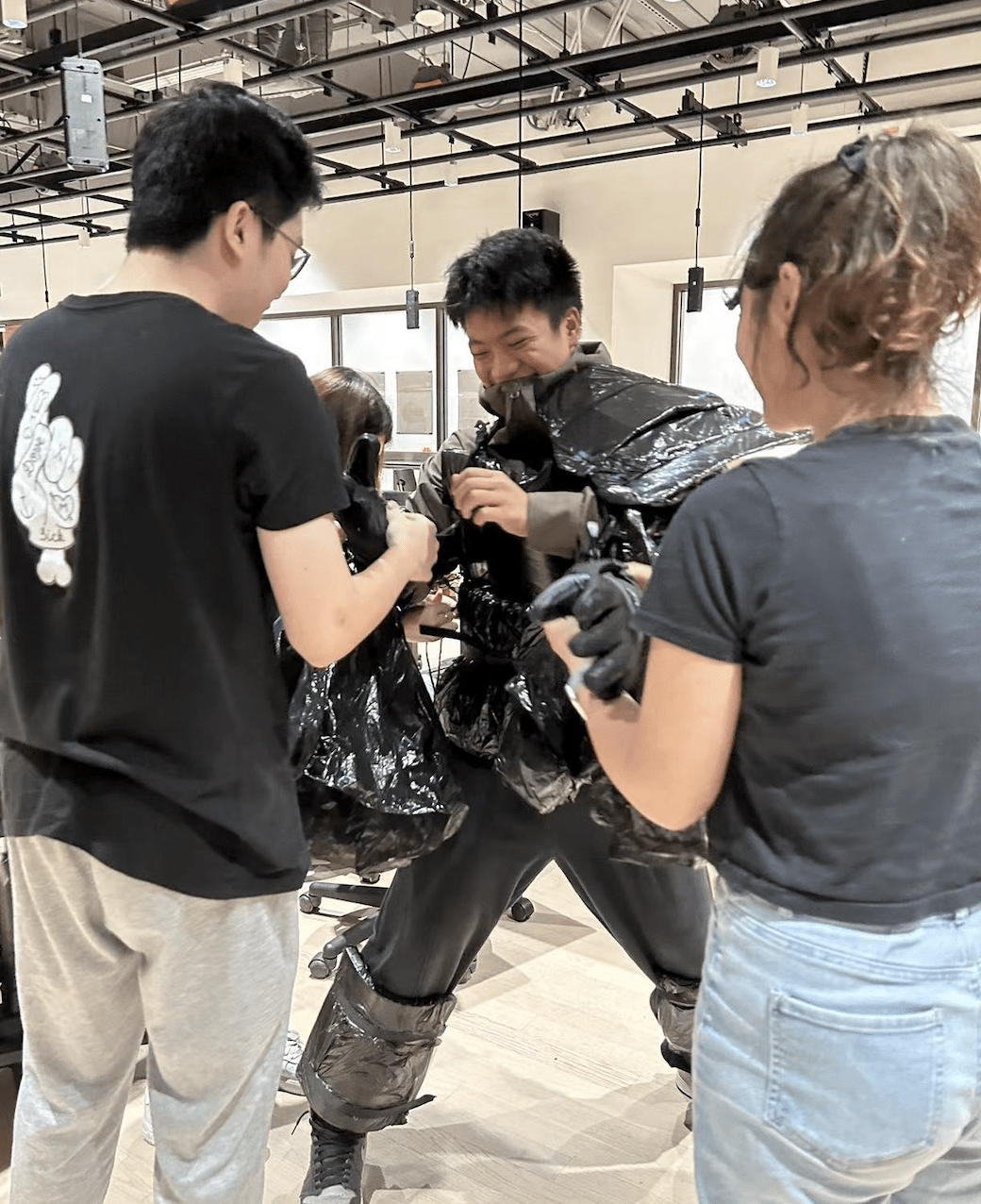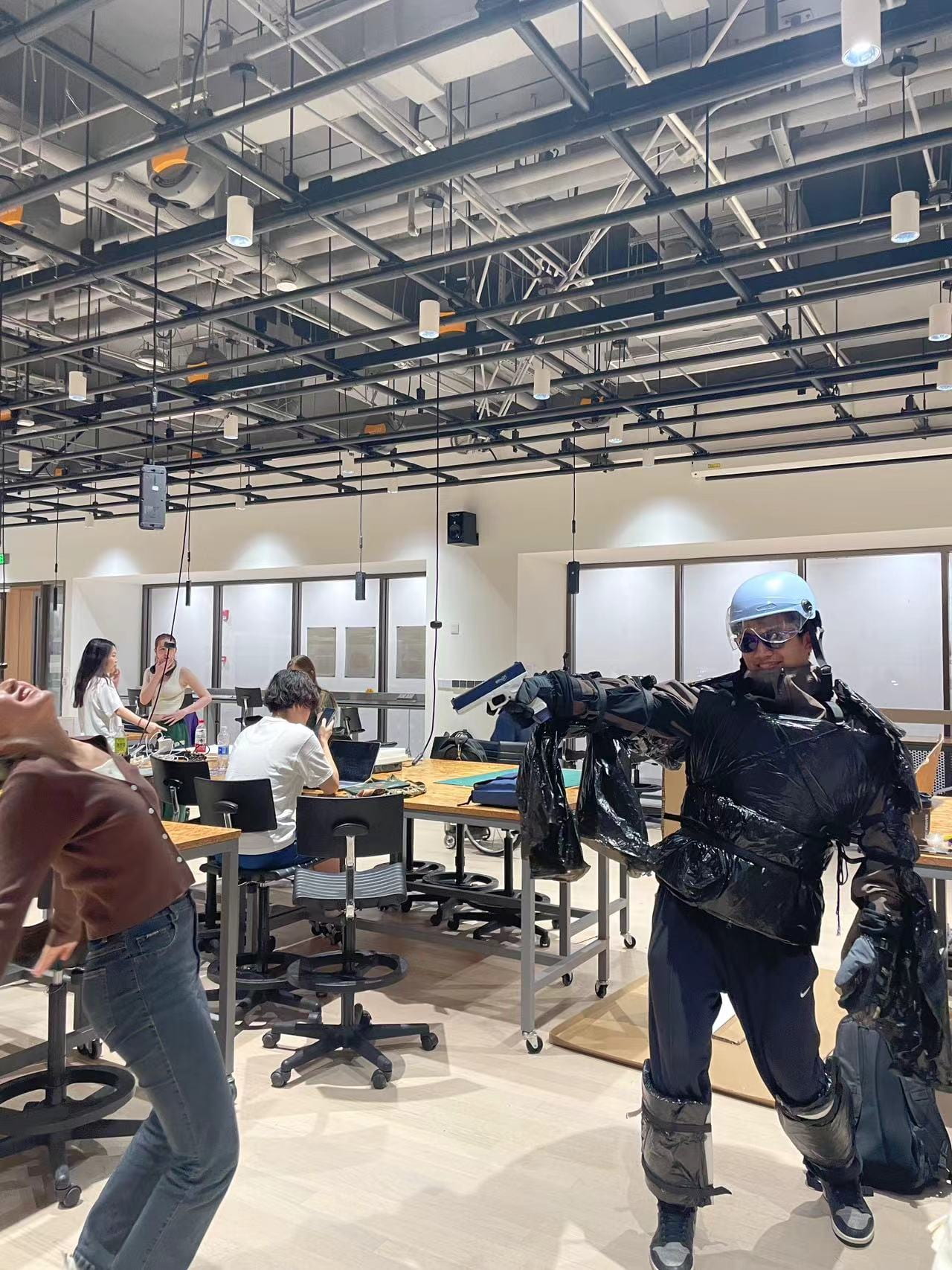Our final performance on Sunday, Sep 24!
The Suit
My group (D) named our artifact: The Suit. This name draws inspiration from a short story, “The Plague” by Yan Leisheng, which we read during Step 2 of our research process. In this narrative, individuals known as Crows had the responsibility of eliminating “infected” individuals by shooting them and disposing of their bodies in pits. The main Crow in the story wore an ordinary suit, but an encounter with an infected person resulted in a slash on their arm, leading to infection with the plague. In my research reflection, I discussed a possible invention for plague prevention– a hydrogel suit that was unbreakable and lightweight! The interactive aspect of this concept involved seamlessly integrating the suit into a person’s clothing, similar to Saran wrap. With the push of an activator, the hydrogel bio-hazard suit would envelop the wearer’s body.
Looking back, I think our artifact was quite successful! All six members of our group played equal roles in the construction and assembly of the suit. We envisioned its structure to resemble that of Marvel’s Iron Man, featuring chest plates, shin guards, face armor, and arm shields. When it came to material selection, we skillfully cut and shaped pieces of cardboard and styrofoam, as these materials were easily moldable to conform to the Crow’s body shape. We affixed the armor pieces using velcro, and meticulously lined every detail with black trash bags. This approach not only showcased the flexibility of the armor material, which we imagined as lightweight, moldable metal, but also created a dark and aesthetic appeal. In our demonstration, we set a scene of the Crow wearing an old suit (regular clothes), dressed the Crow in our artifact, then reenacted the scene with the Crow wearing a new suit (artifact). The result was a stark contrast, and was obvious in proving the effectiveness of the armor. In terms of failure, I’d say the biggest aspect of not having technology is having the “self-assembly” factor. The Crow should be able to press one button and automatically have the suit adjusted to fit his body. Instead, our presentation was manual, and diminished the interactive factor. Expanding on a point I previously addressed in my research, we considered the possibility of incorporating hydrogel material into the suit to facilitate both cooling and body temperature monitoring. However, this “more passive” form of interactivity proved challenging to implement fully within the scope of our project. Regrettably, our Crow encountered issues with overheating while wearing the armor we had constructed.
As we collectively reflected on possible changes, I think Professor Andy’s comment was very realistic. Had we shown a possible failure in the suit malfunctioning in a third demonstration, it would have established the armor’s validity and made it more applicable to real-life. If we had an opportunity to redo, we could consider having an infected person shoot the Crow, seeing what reaction the bullet would do to the armor. We could even brainstorm a self-repairing suit, build another version with stronger armor, and regard other possibilities. To emphasize on interactivity, we would not be running and assembling the armor, but having strings like a puppet to insert the armor onto the Crow. This may give a more vibrant picture to the “automatic” interactiveness of the artifact.
Critical Analysis- Promax Nebulous 3000 Cyber
The Promax Nebulous 3000 Cyber by Group B was a demonstration of morality within the citizens of Omelas. To my understanding, after the people of Omelas saw the poor state the child was in, they were forced into a moral controversy of 1. Leaving the city to give the child a better life 2. Staying in Omelas to continue their fortunate life. The root of the ethical issue was that the city was sacrificing the wellbeing of one person (kid) for the well-being of everyone else (citizens). Thus, the artifact that they came up with were wings that would transport citizens away, essentially setting the child free once there would be no one to make use of the child.
This group did an exceptional job with how they set the scene! Their cardboard background was a 2-in-1, a beautiful portrait of a colorful society (rainbows, houses, vibrant plants). In the middle of their demonstration, they switched the cardboard around to reveal a grim, dark setting with pictures of skeletons and spiders– successfully portraying the basement conditions the child was residing in. Their supporting prop, the citizens of Omelas that were depicted as IxLab’s three professors, was the most memorable! They symbolized the happy citizens that lived in Omelas without a care in the outside world.
The assignment asked for interactivity and innovation, and while it definitely meets the criteria of innovation, I think the wings artifact could use more interactivity. I observed that some group members had to manually pull on the wings to simulate a fluttering effect.To enhance the interactivity aspect, they could consider incorporating springs or threading yarn through holes in the wings to allow for more autonomous movement. Regarding the performance, while the group did an excellent job illustrating the background and scene, there’s an opportunity to go deeper into potential scenarios, such as how the wings might malfunction or how the individuals using the wings could potentially overcome their power. These explorations would add depth, complexity, and interactivity to the narrative and performance.
Individual Contribution & Team Collaboration
In my role as a leader during the brainstorming phase of our project, I took on responsibilities such as outlining the project scope and refining project details. During our initial meeting, I aimed to establish an open and collaborative atmosphere by encouraging everyone to share their research findings from the stories we had explored and their individual interpretations of interactivity. This “icebreaker” exercise allowed us to gauge each team member’s creative interests and identify common themes. During this discussion, it became apparent that many of us had a shared interest in short stories 2 and 3. It was during this discussion that I proposed the concept of a “suit” idea, emphasizing its feasibility with materials at hand. As a team, we collectively considered four possible inventions: a Newton’s Cradle constructed from water bottles, a cardboard conveyor belt, musical wine glasses, and the suit concept. Through a process of elimination, we ultimately decided to pursue the development of the suit as our project.
In the process of building and assembling our project, Eva exhibited excellent skills in creating prototype drawings for each individual part, while I took on the task of experimenting with different materials for the armor pieces. On the first day of our project work, we collaborated with Henry and Evan, delegating tasks that involved having them cut out cardboard and styrofoam to craft the shin guards and arm pieces. I was responsible for hot gluing and connecting the various components together, utilizing yarn in the process. We all tried to assemble some pieces on Henry at the end, to visualize what the suit would look like fully made.
On the second day, Zora and Nina joined our efforts to work on the shoulder plates. They were responsible for cutting out cardboard and lining it with black trash bags to create these components. Evan continued to serve as our Crow model, despite occasional challenges due to the trial attempts at dressing the armor. During this time, he also contributed by brainstorming ideas for our script and how to set the scene. Throughout our work, we persisted in refining the details of the armor pieces, even when encountering minor setbacks like hot glue malfunctions and velcro tearing. Additionally, Eva contributed her moped helmet for head protection, while Evan provided ski gloves and sunglasses to enhance the details of the costume. By the end of the third day, I took on the role of directing and timing our entire group’s demonstration. Although we encountered a few roadblocks regarding the division of responsibilities for dressing specific armor pieces, we eventually reached a fair and even distribution of tasks among the five of us.
I was extremely proud of our teamwork dynamics! Everyone was responsive and punctual, showing up on time for meetings and always working past our “set” time to leave. Our project idea was fun, everyone was engaged with their individual designing/testing responsibilities, and we respected one another by always asking for a second (or third) opinion. We had 4 total meetings, including building and rehearsing, and our finished demonstration effectively reflected our group synergy.
Script
Evan: Crow (shoots infected person)
Henry: wind + dresser
Tammy: dresser (introduce and narrate)
Eva: dresser (introduce and narrate)
Zora: dresser (infected and shot)
Nina: dresser (kidnapped by infected person)
Narrator retells the story or the part where he gets slashed and infected and dies(?).
Tammy: “Our group chose to reenact the scene in “The Plague” where the Crow gets slashed —
Eva: One of the infected throws a knife and the Crow shoots, however the knife strikes him in the arm and he gets infected.
- Person throws knife, crow shoots
- Insert wind > Henry> Knife cuts Crow
- Crow “dies” from being infected
Tammy: Now, how would the story have changed had the Crow been wearing a stronger suit? (time)
- Crow press button
- Takes out sunglasses from pocket
- Everyone rushes to dress Crow (stand like iron man preparing for surgery)
- Eva and tammy: body, front and back
- Nina and zora: tummy
- Zora and henry: legs
- Eva and tammy: arms
- Nina and tammy: shoulders
- Eva and Henry: gloves
- Henry: helmet and mask first
- **Eva narrates different uses of armor: shoulders, chest plates front and back, stomach, shin guards, arms, helmet, materials used to create
Eva: Now that he’s ready, let’s watch the scene again.
Zora kidnaps Nina.. Nina resists and screams…
Evan: Let her go!
Zora: No, why should I? You kill people everyday.
Evan: It’s the right thing to do.
Zora: I don’t care.
- Person throws knife, Crow shoots
- Insert wind> Henry> Knife breaks!
- Crow does not die
- “Thank god I was wearing this suit! It protected me from the dangerous knife, I love this suit!”
Photos
Meeting 1: Armor Prototyping
Meeting 2: Shoulder Armor + Detailing
Meeting 3: Fitting + Improvising…
Meeting 4: Rehearsals!!
